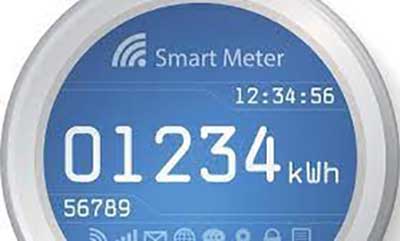Date: 08/05/2023
Relevance: GS-2: Government Policies and Interventions for Development in various sectors and Issues arising out of their Design and Implementation.
Key Phrases: smart metering, results-linked grant-cum-financing, results-linked grant-cum-financing, Ministry of Power, Council on Energy, Environment and Water (CEEW), prepaid or post-paid smart meters, smart meter mobile app, Nationwide Education Campaigns, Advanced Metering Infrastructure Service Providers.
Why in News?
- India is undergoing a significant shift towards smart metering interventions in the power sector.
- The country has already installed over 5.5 million smart meters, with a target to replace 250 million conventional electric meters with prepaid smart meters by 2025-26.
- The Ministry of Power is driving a nationwide campaign to educate consumers about the benefits of smart meters, and discoms must co-own the program and take the driving seat.
- India is supporting this initiative through a results-linked grant-cum-financing to help power distribution companies (discoms) become financially sound and efficient to deliver better services to consumers.
Reaping technology benefits:
- A recent study by the Council on Energy, Environment and Water (CEEW) found that the majority of smart meter users have already begun to experience some of the technology benefits.
- The study covered about 2,700 urban households that use prepaid or post-paid smart meters across six States.
- Half the users reported improvements in billing regularity, and two-thirds said paying bills had become easier.
- Around 40% of users alluded to multiple co-benefits such as a greater sense of control over their electricity expenses, a drop in instances of electricity theft, and improved local power supply.
- In fact, 70% of prepaid smart meter users said they would recommend the technology to their friends and relatives.
- These findings give confidence that India’s smart metering transition is heading in the right direction.
Challenges in implementation:
- Despite the benefits, there are still some road bumps. For instance, half of the users were not using the smart meter mobile app, and many were unable to access detailed electricity bills, leaving them doubtful about their bill computation and deductions. Solving these issues is crucial to bring a smart-meter revolution in India.
Solutions for a Smart Electricity Future:
- As India marches towards its vision of a financially sound and digitalized power sector through smart metering interventions, it must pursue a user-centric design and deployment strategy.
- Here are four suggestions on how diverse actors can step up.
- Drive Nationwide Education Campaigns:
- The Ministry of Power should drive a nationwide campaign to educate consumers about smart meter benefits and improve the uptake of smart meter apps.
- The apps should be accessible to users from diverse socio-economic backgrounds and provide actionable tips and information.
- This is important, as user satisfaction with smart meters is linked to their ability to access and decipher online bills and perceived technology benefits.
- High user satisfaction in Assam and high uptake of the mobile app in Bihar indicate learning opportunities on how to scale smart meter usage for discoms in other States.
- Co-Own the Programme:
- Discoms must co-own the program and take the driving seat.
- The majority of smart meters in India are being deployed by the Advanced Metering Infrastructure Service Providers (AMISPs), responsible for the installation and operation of the AMI system for the project lifetime (10 years).
- Discoms must closely work with AMISPs to ensure a smooth installation and recharge experience for users, to leverage smart meter data for revenue protection and consumer engagement.
- For this, discoms will need to strengthen their internal capacity through suitable staffing and training interventions.
- Collaborate to Devise Innovative and Scalable Data Solutions:
- Discoms, system integrators, and technology providers should collaborate to devise innovative and scalable data solutions.
- Effective use of smart meter data is fundamental to unlocking their true value proposition.
- This would require an ecosystem that fosters innovation in analytics, data hosting, and sharing platforms and enables key actors to collaboratively test and scale new solutions.
- Strengthen Regulations:
- Policymakers and regulators must strengthen regulations to empower consumers to unlock new retail markets.
- Currently, important provisions concerning the phase-out of paper bills, arrear adjustment, frequency of recharge alerts, buffer time, rebates, and data privacy are scattered across different regulatory orders or simply missing.
- Their incorporation within existing State frameworks will be crucial for a positive technology experience for end users.
- Regulators must also enable simplification and innovation in tariff design and open the retail market to new business models and prosumers (producers, consumers, and storage users).
- In a progressive step, last month, the Ministry of Power proposed amendments to the Electricity Rules to enable time-variable tariffs for all smart meter users.
Conclusion:
- India is on a unique journey of meeting its growing electricity demand while decarbonizing its generation sources.
- Smart meters comprise a critical part of the transition toolbox, by way of enabling responsible consumption, efficient energy management, and cost-effective integration of distributed energy resources.
- A user-centric design and deployment philosophy will be crucial for the success of India’s smart metering initiative.
Source: The Hindu
Mains Question:
Q. Explain the benefits and challenges of the smart metering initiative in India. What steps can be taken by the government, power distribution companies, and technology providers to overcome these challenges and ensure the success of the initiative?






















